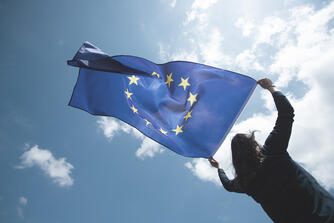General framework
Resolutions
In order to achieve the higher EU climate targets and compensate for the associated CO2-costs, a level playing field would have to be created for all international competitors. After all, not everyone is subject to the same or comparable regulations and costs. In addition, the steel industry must have access to affordable low-carbon energy in large quantities. To make all this possible, innovation funds must be increased to cover the high investment needs of steel companies.

Current Environmental Council decisions on ETS and CBAM:
The European energy and environment ministers have agreed on a far-reaching tightening of existing climate protection targets as part of the Fit for 55 package. Among other things, the decision of the Environment Council provides for a gradual reduction in the quantity of CO2-certificates in the EU emissions trading system by 61% by 2030 compared with 2005 (previously 43%). Free allocation is to be phased out gradually and more slowly than envisaged by the EU Commission, including for industries that are particularly exposed to international competition. As decided in March in the Economic and Financial Affairs Council, a CO2-border adjustment mechanism (CBAM) to protect against carbon leakage is to be introduced from 2023 with a transition phase of three years and gradually replace the free allocation of emission allowances by 2035.
Thus, on June 22, 2022, the EU Parliament took a position in Brussels on the revision of the EU Emissions Trading Directive and the introduction of a CO2-limit offset. The decisions were criticized in part by market participants and associations. The EU member states are expected to make decisive improvements. Essentially, the aim is to enable companies to make their investment decisions under appropriate political conditions.

Current resolutions of the Environmental Council on ETS and CBAM:
The European energy and environment ministers have agreed on a far-reaching tightening of the existing climate protection targets as part of the Fit for 55 package. The decision of the Environment Council provides, among other things, for a gradual reduction in the quantity of CO2-certificates in the EU Emissions Trading System by 61% by 2030 compared to 2005 (previously 43%). The free allocation is to be phased out gradually and more slowly than planned by the EU Commission, including for industrial sectors that are particularly exposed to international competition. As decided by the Economic and Financial Affairs Council in March, a Carbon Border Adjustment Mechanism (CBAM) is to be introduced from 2023 with a three-year transition phase to protect against carbon leakage and gradually replace the free allocation of emission allowances by 2035.
On June 22, 2022, the EU Parliament in Brussels adopted an opinion on the revision of the EU Emissions Trading Directive and the introduction of a carbon border adjustment mechanism. The resolutions were criticized in part by market participants and associations. The EU member states are expected to make decisive improvements. Essentially, the aim is to ensure that companies can make their investment decisions within an appropriate political framework.